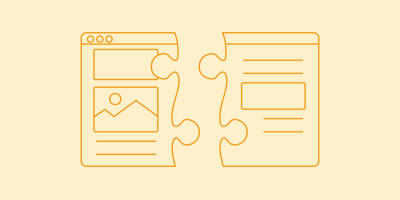
Powering the Digital Workplace with an Employee Experience Platform

The pay-it-forward effect contends that doing something kind for someone causes a chain reaction that encourages them to do the same for someone else. Whether it’s buying breakfast for the person behind you at the drive-thru or complimenting a stranger’s outfit, good deeds can ripple outward and leave a larger positive impact.
The same can be said for the relationship between organizations and their employees. When businesses invest in a successful work culture and environment, employees are more likely to innovate and feel motivated to meet organizational and customer needs. Indeed, organizations with highly engaged business units see a 23% difference in profitability, according to Gallup’s State of the Global Workplace: 2022 Report.
Yet workplace technology and solutions are often way behind the curve. With customer experience (CX) expectations higher than ever because of digital leaders like Amazon and Netflix that make the customer journey as smooth and simple as possible, why do so many workplaces still rely on traditional intranets and digital filing systems that feel straight out of the 90s?
A composable and accessible approach to employee engagement
Too often, business meetings and corporate presentations are chock full of jargon and numbers that lack real meaning. If leaders can’t effectively explain what their mission is to the people who create their customer experiences every day, how can they expect them to convey that value to customers? Employee experience (EX) and customer experience need to speak the same language and have a common brand voice. This is only possible when EX and CX share the same content and architecture. Both experiences should come from the same building blocks.
Yet when intranets were first introduced, they were mainly built as a way for companies to talk to employees. The first business websites, on the other hand, were intended to provide customers with basic information about who the brands are, what products they offer, and how to get in touch — talking "at" customers rather than “with” them. Both systems were siloed , meeting only a partial need or showing snippets of data rather than representing the full context of an organizational effort.
Today, these silos are often further divided across individual departments in teams. Sales, IT, marketing, and customer success all operate within their own conferencing apps and project management tools without an overarching platform to unify different information and initiatives happening across the business. This lack of connection and collaboration hurts productivity and can ultimately lead to disjointed experiences for the end customer interacting with various parts of the business. Employees need a more dynamic platform that drives collaboration and helps them feel valued and connected to their work.
Tools that empower global workforces
Employee experience platforms (EXPs) extend the promise of a digital experience platform (DXP) by unifying digital functions and delivering a seamless experience to the right person at the right time. Internally, using a DXP to orchestrate all employee systems via an open API framework makes it easier for people to access what they need from one place.
For instance, an open and connected EXP allows employees to stay abreast of the latest product developments, programs, and customer responses in real time. No more asking around for the latest analyst report or event recording. By investing in tools that don’t require technical expertise, businesses can also onboard new employees faster, so they can tackle meaningful projects in less time. Information can be easily surfaced and used to drive additional conversations or engage in meaningful customer conversations.
In particular, a platform like Acquia Site Studio, which leverages low-code tools and component-based templates, gives teams the ability to build and deliver customer experiences without depending on finite IT resources. Low-code tools and intuitive drag-and-drop capabilities hasten time to market, allowing businesses to serve customers on demand instead of getting stuck in a long queue of ticket requests.
When coupled with Acquia DAM — a digital asset management system that gives employees across an organization access to up-to-date assets — go-to-market, customer success, product, and HR teams alike can further coordinate workflows and easily search for the exact video, infographic, or other asset that guarantees on-brand marketing and communications.
And companies can deepen their relationship to staff by ensuring tailored employee experiences with a tool like Acquia Personalization. As unique as external stakeholders like clients and customers may be, internal stakeholders like employees are equally so — some work on site, some work in far-flung locations, and so on. With Personalization, for example, organizations can show content that’s specific to that person. So, if there’s a distributed team with members in Vietnam and Australia, the teammate in Vietnam will see content pertaining to the office policies there, while the one in Australia will be served content related to the Australia branch.
Organizations that improved their EX
Need examples of organizations that launched successful employee experience initiatives? Two come immediately to mind:
- National association of accounting and consulting firms BDO Alliance USA built an employee platform to optimize how their employees search for reports and documents. The combination of Drupal’s flexible technology and composable architecture and the robust infrastructure of hosting on Acquia Cloud Platform provided the needed power and flexibility for members to efficiently find assets among its 120,000 searchable data points.
- When multinational financial services company Charles Schwab needed to modernize their existing learning management platform (LMS), they turned to Acquia and Drupal’s open CMS to create, store, and deliver virtual training and learning experiences to new clients and associates. Rather than rely on old learning templates that couldn’t be accessed on certain devices and channels, Drupal’s open framework allowed content to be delivered anywhere, including on mobile, which was indispensable for many of their consultants who operate remotely.
The scalability and flexibility of Drupal could integrate with Charles Schwab’s multiple internal channels and resources and directly translate the knowledge of an LMS into applicable experiences on the front end. By unifying their LMS and content management system (CMS), the global organization built a common workflow and granted individuals more flexibility and independence in how they worked without sacrificing brand governance and capabilities. Features like drag-and-drop functionality and what-you-see-is-what-you-get (WYSIWYG) content creation tools also give employees the power to see the experience through the eyes of their end customer.
Employee experience platforms evolve to suit the experience
Rather than treating employee intranets and information hubs as static bulletin boards that present yearly revenue or other data without context, an employee experience platform should evolve to meet changing needs. It should leverage flexible and modular applications and functions that can be enhanced and improved upon over time without the need to totally remove and replace the entire infrastructure and install a new system. The ability to integrate different employee-facing systems creates a more cohesive work environment.
As employees continue to grow in their career and take on new roles and tasks, a central, intelligent employee experience platform supports them in growing their knowledge by proactively offering news articles, company announcements, and other content assets relevant to them or their team. By ensuring each employee's efforts align to greater business objectives, cross-departmental trust and transparency is nurtured, allowing staff to more immediately understand their impact. This greater visibility means that employees can optimize certain tasks that are working well and change course if something isn’t as effective for customers rather than waiting for a quarterly or yearly review to find out where they’ve fallen short. The result? More strategic projects that customers want and a more trustworthy, satisfying employee culture.
To learn more about how companies can create better customer experiences by improving the employee experience, download our free e-book Doubling Down on Employee Experience: How Culture Drives Growth.


